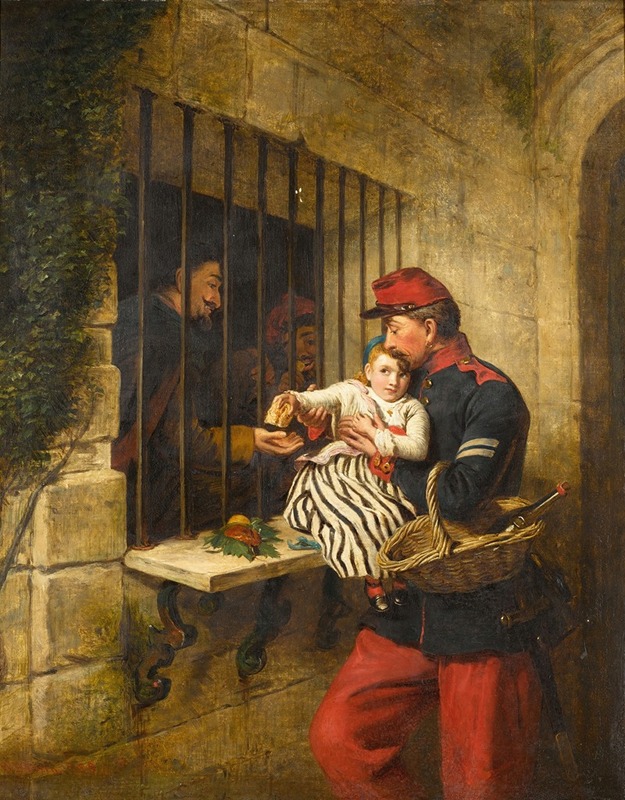
Interior of Marseilles Prison, a Scene from Little Dorrit
A hand-painted replica of William Powell Frith’s masterpiece Interior of Marseilles Prison, a Scene from Little Dorrit, meticulously crafted by professional artists to capture the true essence of the original. Each piece is created with museum-quality canvas and rare mineral pigments, carefully painted by experienced artists with delicate brushstrokes and rich, layered colors to perfectly recreate the texture of the original artwork. Unlike machine-printed reproductions, this hand-painted version brings the painting to life, infused with the artist’s emotions and skill in every stroke. Whether for personal collection or home decoration, it instantly elevates the artistic atmosphere of any space.
"Interior of Marseilles Prison, a Scene from Little Dorrit" is a painting by the British artist William Powell Frith, created in 1856. This artwork is based on a scene from Charles Dickens's novel "Little Dorrit," which was published in serial form between 1855 and 1857. Frith was known for his narrative style and his ability to capture the essence of Victorian society, and this painting is a testament to his skill in translating literary scenes into visual art.
The painting depicts a scene set in the Marseilles prison, which is a significant location in Dickens's novel. "Little Dorrit" explores themes of imprisonment, both literal and metaphorical, and the Marseilles prison serves as a backdrop for some of the novel's critical developments. The novel's protagonist, Amy Dorrit, is born in the Marshalsea debtors' prison in London, and the story delves into the lives of those affected by the harsh realities of debt and incarceration.
Frith's painting captures the grim atmosphere of the prison, with its dim lighting and somber tones. The composition is carefully arranged to convey the oppressive environment and the despair of the prisoners. The figures in the painting are depicted with a high level of detail, showcasing Frith's ability to portray human emotion and character. The expressions and postures of the prisoners reflect a range of emotions, from resignation to defiance, highlighting the diverse responses to their shared plight.
William Powell Frith was a prominent figure in the Victorian art scene, known for his genre paintings that often depicted scenes of everyday life and social gatherings. His works were characterized by their attention to detail and narrative quality, making them popular among the public and critics alike. Frith's ability to capture the nuances of human interaction and societal norms made him a sought-after artist during his time.
"Interior of Marseilles Prison" is an example of Frith's interest in literary subjects, a common theme among Victorian artists who were inspired by the works of contemporary writers like Dickens. By choosing to illustrate a scene from "Little Dorrit," Frith not only paid homage to Dickens's storytelling but also contributed to the broader cultural dialogue about social issues such as poverty and imprisonment.
The painting was exhibited at the Royal Academy in 1856, where it was well-received by audiences. Frith's ability to bring Dickens's characters and settings to life resonated with viewers, many of whom were familiar with the novel. The artwork remains an important piece in the study of Victorian art and literature, illustrating the close relationship between the two forms of expression during this period.
Today, "Interior of Marseilles Prison, a Scene from Little Dorrit" is recognized as a significant work in Frith's oeuvre, reflecting both his artistic talent and his engagement with the social issues of his time. The painting continues to be appreciated for its historical and cultural significance, offering insight into the Victorian era's artistic and literary landscape.














